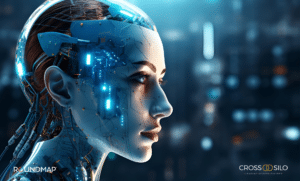Following the post ‘Conditional Mastery™ – Getting a Grip on the Business Cycle, we would like to elucidate the concept of archetypes in the business cycle, drawing from the Kondratieff long wave (K-wave) theory.
It’s helpful to frame the K-wave as a story of evolution and adaptation over approximately 53 years, with each stage personified as a distinct archetype. Each archetype represents the dominant mode of operation in that phase of the cycle:
- Stage 1 – THE CHALLENGER:
- Characteristics: This stage is marked by the emergence of new technologies and business models. It’s a time of innovation and disruption, where doing things faster, better, and cheaper challenges the existing market norms.
- Impact: New entrants seize this opportunity to disrupt and challenge the status quo, shaking up established market players.
- Stage 2 – THE CONQUERER:
- Characteristics: The debate over the most favorable technologies and business models settles, and a competition frenzy ensues.
- Impact: This is a battle for market dominance, with a new generation of market leaders emerging, seeking to conquer and establish themselves at the top.
- Stage 3 – THE CAPITALIZER:
- Characteristics: The market reaches saturation, and product differentiation becomes minimal, pushing players towards differentiating through services.
- Impact: As natural growth slows, businesses focus on scaling operations to reduce costs and increase productivity, capitalizing on their established position to remain profitable.
- Stage 4 – THE CONSOLIDATOR:
- Characteristics: In this mature market phase, while intense price competition and market positions are well-defined, the overall market size begins to shrink.
- Impact: Products are feature-rich, and market barriers are high due to the dominance of established players. However, this also sets the stage for a new generation of Challengers, often entering the market with innovative models that cater to previously underserved or overlooked customer segments.
By understanding these archetypes and their roles in the business cycle, executive teams can better strategize and respond to the challenges and opportunities presented in each stage. This approach enhances their decision-making process and prepares them for the inevitable shifts in the market landscape.
Author
-
Edwin Korver is a polymath celebrated for his mastery of systems thinking and integral philosophy, particularly in intricate business transformations. His company, CROSS/SILO, embodies his unwavering belief in the interdependence of stakeholders and the pivotal role of value creation in fostering growth, complemented by the power of storytelling to convey that value. Edwin pioneered the RoundMap®, an all-encompassing business framework. He envisions a future where business harmonizes profit with compassion, common sense, and EQuitability, a vision he explores further in his forthcoming book, "Leading from the Whole."
View all posts Creator of RoundMap® | CEO, CROSS-SILO.COM

![Navigating the Four Archetypes of the Long-Wave Business Cycle 1 ROUNDMAP_Slide_Archetypes_Business_Cycle_Copyright_Protected[1]](https://roundmap.com/wp-content/uploads/ROUNDMAP_Slide_Archetypes_Business_Cycle_Copyright_Protected1.png)




